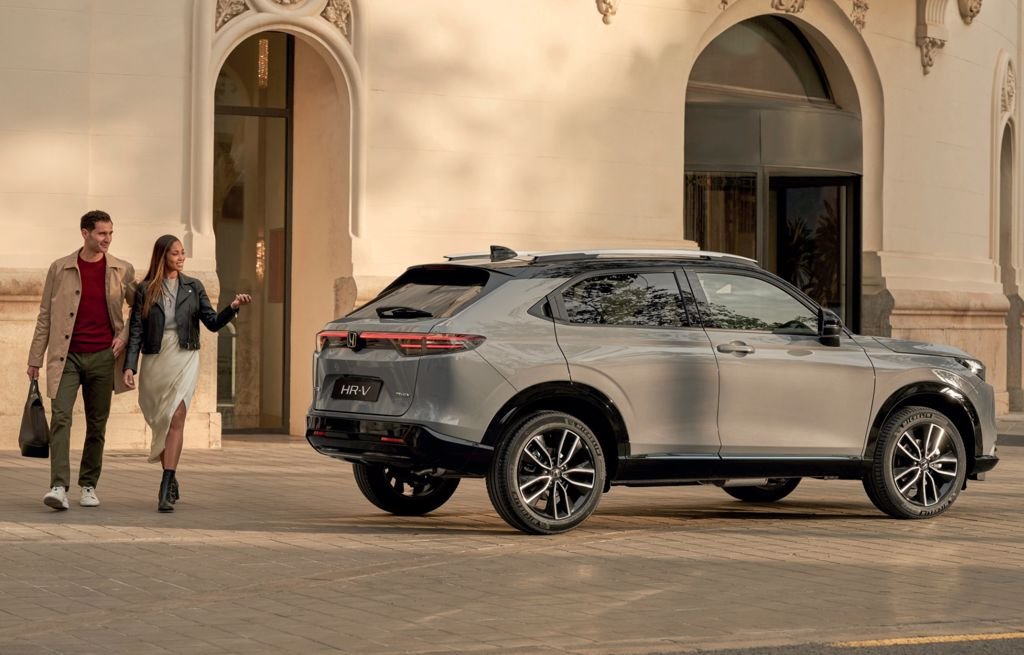By Imran Malik | July 23, 2025
When the Honda HR-V was launched in Pakistan in late 2022, it rode in with high expectations and a recognizable global brand name. However, nearly three years later, questions remain: Did it live up to the hype? Has it truly competed with market leaders like Kia Sportage and Hyundai Tucson? And did Honda’s own Vezel hurt HR-V’s sales more than competitors did?
Sales Snapshot: Who’s Winning Pakistan’s SUV Battle?
Let’s look at the numbers. According to market estimates from auto dealers and import data, here’s how the HR-V stacks up in terms of sales since launch:
-
Honda HR-V: ~5,500–6,000 units
-
Kia Sportage: 18,000+ units
-
Hyundai Tucson: 12,000+ units
-
Toyota Corolla Cross: ~4,000–4,500 units (limited due to CBU imports and higher price)
-
Haval Jolion & H6 combined: ~7,000–8,000 units (a surprising performer despite being newer in the market)
In terms of volume, the HR-V lags far behind Kia Sportage and Hyundai Tucson, and is being challenged even by newer brands like Haval, which has captured attention with better tech offerings and aggressive marketing.
Cannibalized from Within? Vezel vs. HR-V
Ironically, one of the biggest threats to HR-V’s sales wasn’t Kia or Hyundai — it was Honda’s own grey-imported Vezel.
While the HR-V is assembled locally and marketed as a premium option, buyers quickly realized that imported Vezel units (with Honda Sensing and advanced tech) offered better value — often at similar or slightly higher prices.
This internal cannibalization severely affected HR-V’s appeal among tech-savvy car buyers who preferred a more feature-rich experience.
What’s Missing in HR-V? A Long List
Despite its sleek look and brand trust, the Pakistan-spec HR-V was launched with several critical features missing, especially when compared to global models.
Notable missing features include:
-
Honda Sensing safety suite
-
Adaptive Cruise Control
-
Lane Keep Assist & Departure Warning
-
Rain-sensing wipers
-
Parking sensors
-
Automatic tailgate
-
Autonomous braking
-
Drowsiness detection
Buyers also had to pay up to Rs. 600,000 more for basic accessories and cosmetic upgrades — further damaging its perceived value.
HR-V Pros and Cons
Pros:
-
Honda brand value and reliability
-
Solid build quality
-
Sleek, modern design
-
Decent fuel efficiency
Cons:
-
Underpowered engine compared to rivals
-
Fewer features for the price
-
High cost of optional extras
-
No AWD (All-Wheel Drive) option
-
No hybrid powertrain
-
Poor value compared to the imported Vezel
What’s Next? HR-V E Variant Launch on the Horizon
Honda Atlas is reportedly preparing to launch a more refined variant — the HR-V E — in June, possibly with upgraded features and a price tweak to stay competitive.
While details are still under wraps, insiders hint that the HR-V E might include safety improvements, minor cosmetic updates, and better tech integration, potentially narrowing the gap with its rivals.
READ MORE: Pak Suzuki vows local growth, CEO confirms SUV plans, defends Alto against performance doubts
Can the New HR-V E Succeed?
Success will depend on three key factors:
-
Feature enhancements — buyers expect at least the basics: parking sensors, adaptive cruise, and safety assist.
-
Price correction — to remain relevant against Sportage, Tucson, and upcoming Chinese SUVs.
-
Marketing clarity — Honda needs to differentiate between HR-V and Vezel to avoid further brand confusion.
Final Verdict
So far, the Honda HR-V has had an underwhelming journey in Pakistan. Despite its nameplate strength and SUV appeal, it lagged in performance, tech, and value — key pillars in today’s competitive auto market.
Whether the upcoming HR-V E can revive Honda’s crossover ambitions depends on how well the brand listens to its market — and how boldly it responds to the competition.


